A Salvaged Banksy Mural is Now on View in NYC
This unique Banksy mural goes up for auction on May 21st in NYC!


New York City has five hundred miles of coastline, yet we tend to forget that the shores along the Hudson River used to be a working waterfront. In the early 20th century, there were many factories, warehouses, and distribution facilities along the Hudson, and battle ships docked on the Upper West Side until the 1950s. Of course, construction of new buildings, including such major architectural landmarks as the future home of the Whitney Museum and the Freedom Tower, will continue well into the future. Last week, we joined Openhousenewyork for an architectural cruise up the Hudson River narrated by Tom Mellins, architectural historian and curator, and Bill Miller, maritime historian and author, where we learned a host of facts and fun stories about notable architecture along the Hudson. Here are thirteen of the most interesting and “untapped” buildings, bridges and landmarks.
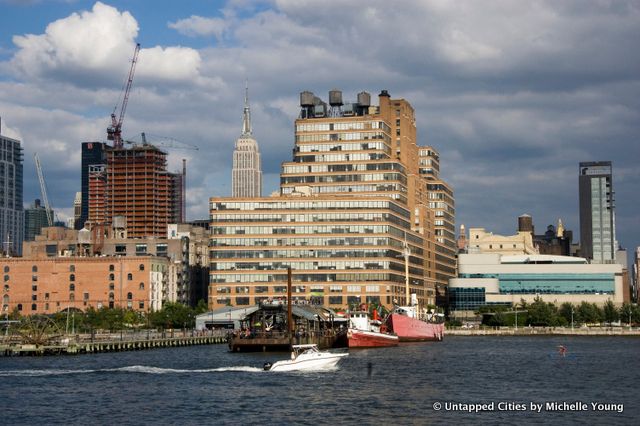
The Starrett-Lehigh Building was constructed in 1930-31 as a joint venture of the Starrett real estate interests and Lehigh Valley Railroad. Its alternating stripes of brickwork and steel strip windows gave the building a modern edge at the time, and many European architects looked to it as a model. Originally, the building’s ground floor included a rail yard where trains and trucks could unload cargo. It had manufacturing, storage, packing and distribution facilities. It received landmark status in 1986 and is part of the West Chelsea Historic District.
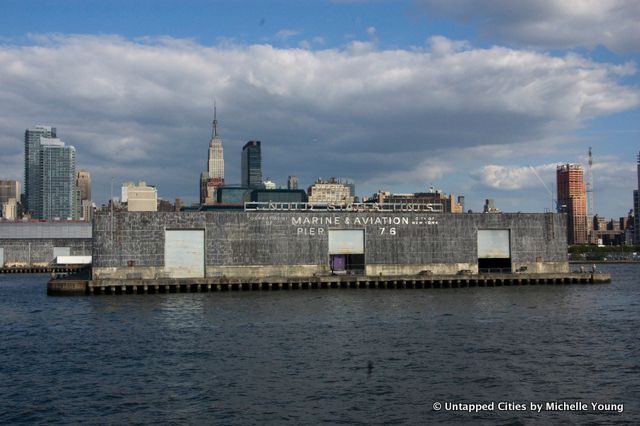
Pier 76 currently serves as a tow pound operated by the NYPD, but plans are underway to transform it into a park if the city can find an appropriate place to move the tow pound. Development at Pier 76–which, according to our guides, is slated to become a shopping mall–is part of the current debate about how to repair and sustain the piers on Hudson River Park that are deteriorating and struggling financially.
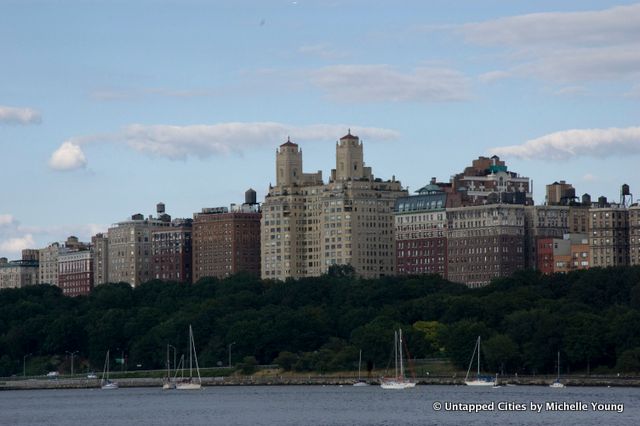
Built in 1938 and designed by the esteemed architect Emery Roth, the Normandy is a great example of pre-War residential architecture. The Italian-inspired towers at the top of the building hide a pair of water tanks that supply the building with running water. At the time, the most valuable property in Manhattan was on Park Avenue, far from the noise and stench of the working waterfront, but the Normandy was built as a luxury apartment complex on Riverside Drive and attracted famous residents. Its name was supposedly taken from the French oceanliner, the SS Normandie, which was seized by the U.S. during WWII and sunk in the Hudson River.
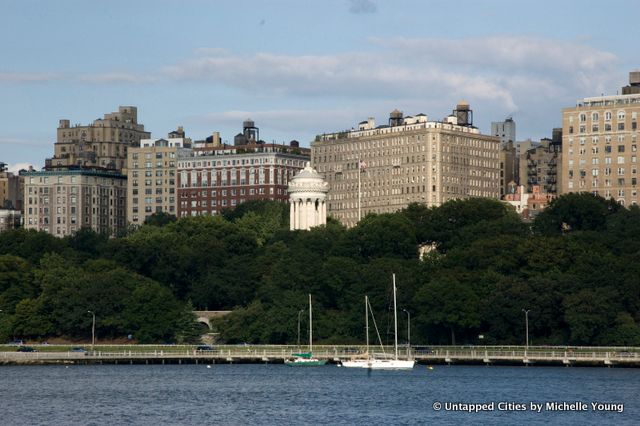
The Manhattan Soldiers and Sailors Memorial Monument is inspired by the Choragic Monument of Lysicrates in Athens. It was built to commemorate Union Army soldiers and sailors who served in the American Civil War. Located at West 89th Street and Riverside Drive, it was designed by the Stoughton brothers and remains a relic of the City Beautiful Movement. When the first stone was laid in 1900, Theodore Roosevelt (then governor) officiated the ceremony. The monument was landmarked in 1976.
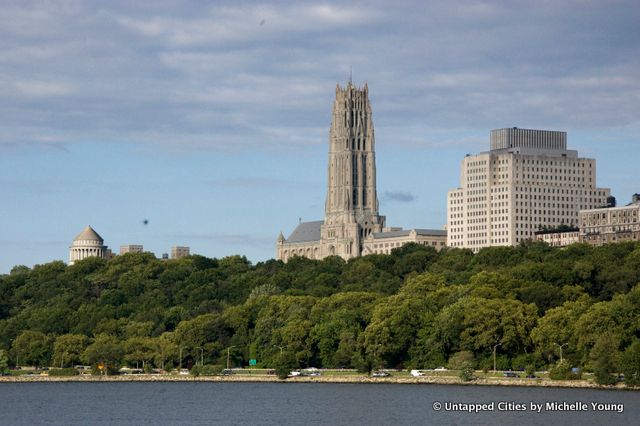
These two architectural focal points at the southern edge of Harlem seem straight out of Europe. Riverside Church was constructed by John D. Rockefeller and Grant’s Tomb was built as a mausoleum to house General Ulysses S. Grant and his wife Julia. Unlike the churches in Europe, Riverside Church was constructed with steel, and only “wears Gothic clothes,” according to Mellins and Miller. Grant’s Tomb was originally envisioned with a grand staircase leading down to the Hudson River, but the plans were never realized.
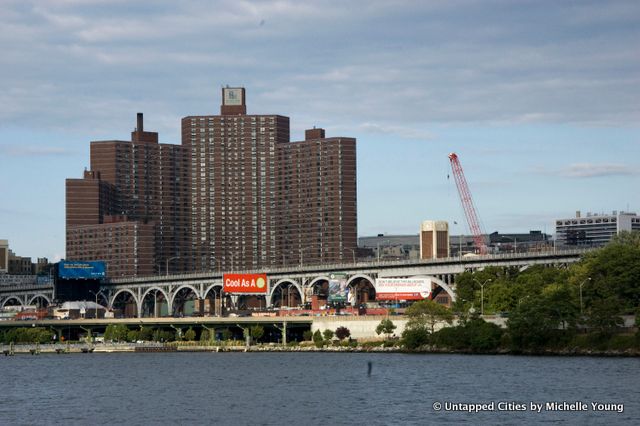
The viaduct that runs along Riverside Drive from Tiemann Place to 135th Street was built in 1900 to connect Manhattanville and Washington Heights. As our guides explained, back in the first half of the twentieth century, people used to go for joyrides on Sundays up and down the Hudson, though that seems like a strange idea to us now. This is why the West Side Highway was built directly overlooking the river. The elevated steel viaduct was inspired by the City Beautiful movement and was highly praised as a marriage of form and function. At the northern end of the viaduct is a historic Greek temple-inspired building that now houses Manhattan Mini Storage.
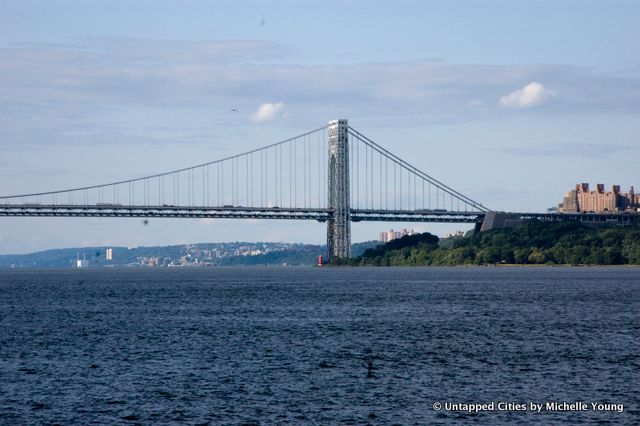
Before the George Washington Bridge was built, spanning the river to join New York City and New Jersey remained a major challenge to architects. Construction on the steel bridge began in 1927 and in 1931 it received its first traffic. It was considered a marvel of engineering at the time, as it spanned twice the length of any other suspension bridge to date. Our guides told us that originally, the design called for covering the steel towers in concrete, but when funds ran short, the architects left the steel exposed. At the foot of the bridge, you can see the Little Red Lighthouse, which was saved thanks to a 1942 children’s book.
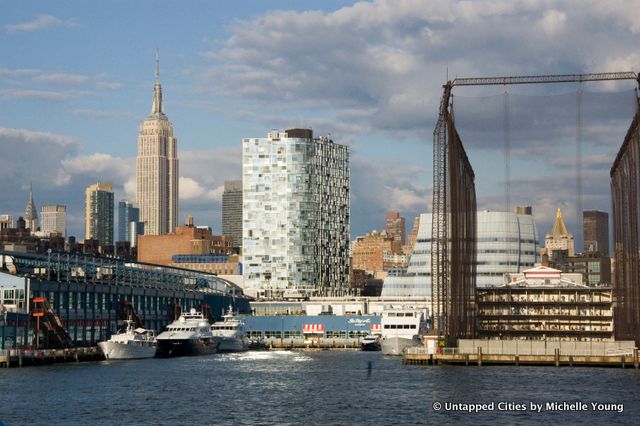
Our guides compared the facade of Jean Nouvel’s residences at 100 11th Avenue to a Mondrian painting, and it’s easy to see why. The intricate geometric pattern is a striking feature of the waterfront along the Hudson and the different shades of glass shimmer, reflecting the water. When it was unveiled in 2010, the New York Times hailed it as a winning combination of grit and glamour, and it certainly adds to Chelsea’s high end status. Check out photos of the spare million dollar interiors on Curbed.
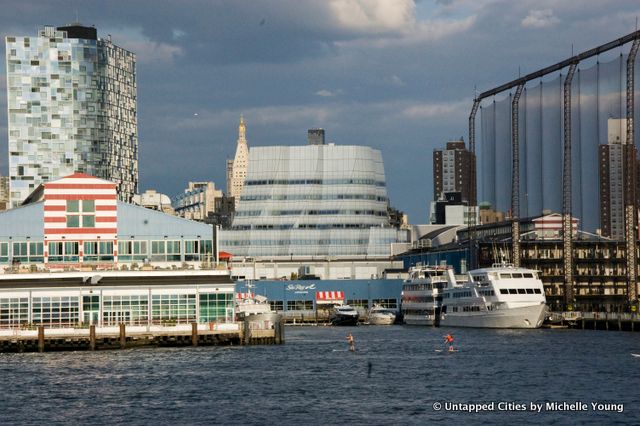
Just south of Jean Nouvel’s residences sits Frank Gehry’s IAC Building, which has often been likened to a ship setting sail and was featured in our article about Nautical Architecture in New York City. It is an excellent example of the way an architect like Gehry takes inspiration from the building’s surroundings when designing. Just behind the IAC Building, you can see the Met Life Tower, which was inspired by the San Marco Campanile in Venice, another city that lives and breathes on the water.
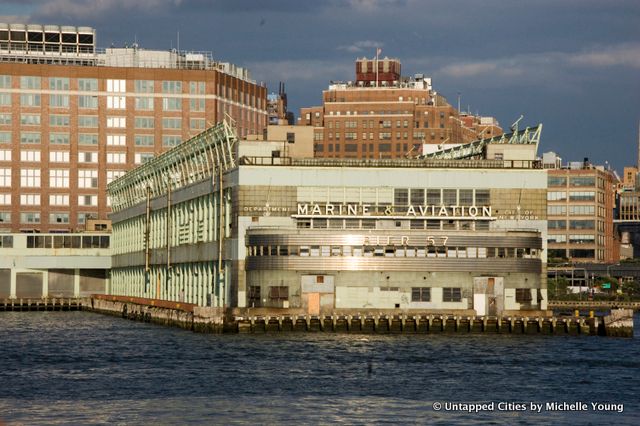
Abandoned for almost a decade, Pier 57 will soon see a new life as a commercial center and art space with restaurant offerings and spaces for film screenings. The whole three-acre complex will be built out of shipping containers by Young Woo & Associates, who also built Brooklyn’s Dekalb Market out of repurposed shipping containers. The new Pier 57 is set to open in 2015.
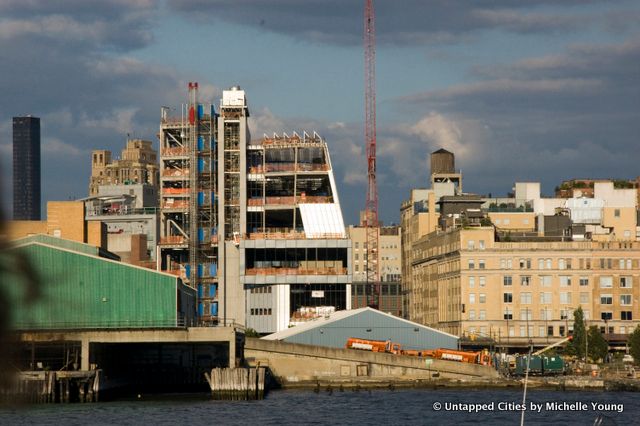
Another major architectural project set to open in 2015 along the Hudson is the future site of the Whitney Museum in the Meatpacking District. The new Whitney was designed by Renzo Piano to cooperate with the surroundings, including the southern end of the High Line, and enhance the Meatpacking District’s reputation for world class architecture. When it opens, it will be the largest column-free art space in New York City.
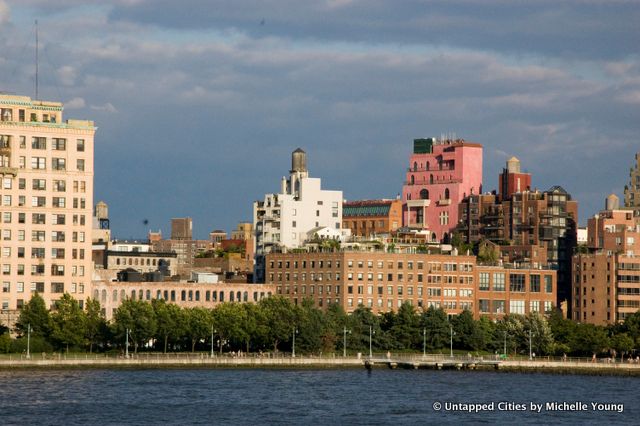
The bright pink building rising high and standing out against the others is the Palazzo Chupi, designed by artist Julian Schnabel. Named for his wife, whose nickname is Chupi, the building is inspired by Venetian architecture. It was built on top of old stables and consists of five condos, Schnabel’s studio, exhibition space, garage, pool and sauna. Check out photos of the interior here.
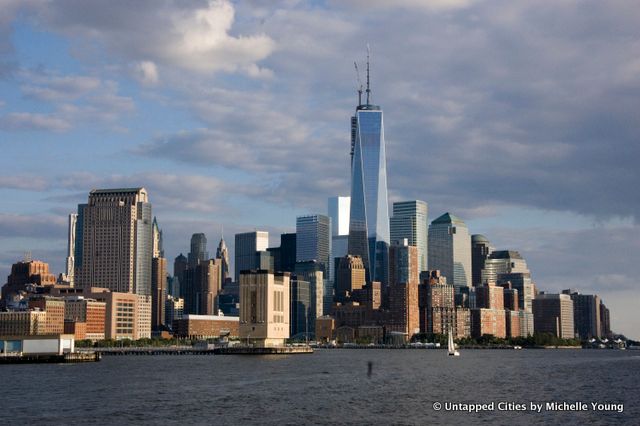
We recently got an exclusive behind the scenes tour of the Freedom Tower’s construction site and is it certainly commanding as seen from the Hudson. At the symbolic height of 1,776 feet tall with a 480 foot tall spire, the Freedom Tower will be the tallest building in the Western hemisphere, as our guides pointed out. Located on the site of the former World Trade Center towers, the new World Trade Center will consist of five skyscrapers that will be constructed as the demand for office space rises. It will also be the site of a new 9/11 Museum. We’re especially excited to see the breaking up of the former “superblock” in favor of walkable human-scaled blocks that fit with Jane Jacobs’ urban planning tenets. Its grand size and shape contribute to the beauty of Lower Manhattan’s waterfront.
Next, check out 10 of NYC’s Most Important Architectural Sites on the East River. Get in touch with the author @lauraitzkowitz.
Subscribe to our newsletter